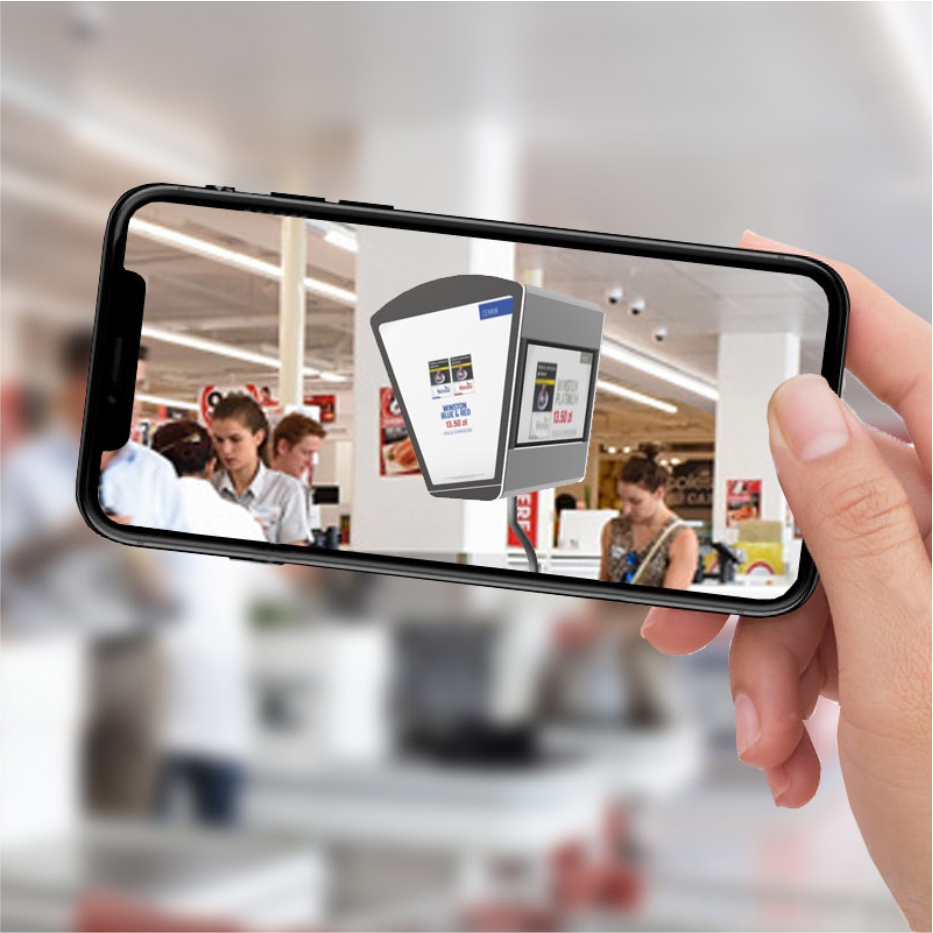Phygital is among the terms that are making an increasing career in commerce. They sound clever and mysterious, and anyone who uses them gets a +10 to professionalism.
But what does the term actually mean? How do you apply it without coming across as a dilettante? How do you understand what the professionals are discussing? I hope you find this text helpful.
Phygital – what is it?
It is a term that combines the words ‘physical’ and ‘digital’. It refers to the way in which the digital world connects to the physical world, and the way in which consumers use modern technology to get a better shopping or service experience.
In practice, it can refer to a wide variety of applications, such as stationary shops that use technology to interact with customers, or mobile apps that allow customers to interact with a brand on different levels.
It can also refer to marketing strategies in which companies use different marketing channels, such as online advertising, TV commercials, outdoor, etc., to attract customers’ attention and encourage them to use the services or products offered.
Put simply, phygital is the merging of the digital and physical worlds to improve the customer experience and increase sales and profits for companies.

Phygital – use
“Connecting the digital and physical worlds” sounds nice, but what is the practical application of this approach in retail?
Phygital is entering the retail industry in many ways, changing the way consumers shop and interact with brands.
Firstly, it facilitates the personalisation of the shopping experience. It enables retailers to collect and analyse data on customers’ shopping preferences to better tailor their offers. For example, with facial recognition technology, shops can tailor adverts and special offers for a particular customer who shows up at the shop.
The second application is the integration of online and offline. It allows the two worlds to merge seamlessly. This allows shops to allow consumers to browse the range on their website and reserve products, and then pick them up in a stationary shop or take advantage of direct home delivery options.
Thirdly, with phygital, stationary shops can use various technologies such as virtual reality, augmented reality or interactive touch screens to provide customers with a modern shopping experience. For example, a clothing shop can allow customers to try on clothes in virtual reality, and a grocery shop can use interactive touchscreens to inform customers about ingredients and product origins.
A fourth benefit is facilitating the use of automation and chatbots in commerce. This helps customers with faster resolution of their problems and answers to their questions. A chatbot helps customers with product selection and provides information on product availability or order status.
Finally, this approach enables companies to create more personalised and targeted – and therefore more effective – marketing campaigns. Personalised offers, emails and customised text messages offer a whole new set of possibilities that the industry is only just beginning to explore.
Phygital and a planogram
But phygital benefits more than just customers, optimising and accelerating their shopping experience. Chains can also use this fusion of worlds to create planograms, or detailed diagrams, which determine where and what products should be displayed in a retail shop.
The aim of planograms is to maximise sales by positioning products in such a way that they are most visible to customers and attract their attention. Phygital influences their creation in a variety of ways, such as allowing the collection and analysis of data from different sources, such as transactional data, in-store customer traffic data, customer preferences and market trend data.
By combining information from online and offline sources, phygital helps to better understand customer behaviour and preferences. For example, data on customers’ online shopping preferences can help determine which products to display in a stationary shop.
In addition to this, phygital allows the use of various technologies, such as smart cameras, motion sensors or interactive touchscreens, which can help to monitor customers’ movement through the shop and their shopping preferences. This data can then be used to better determine which products should be displayed in the shop and in what order.
All of this allows the creation of more personalised planograms that are tailored to individual customer needs and preferences. Using data on the customer’s purchase history, the shop can highlight relevant products and offers to the customer.
As you can see, phygital has the potential to become a true revolution in commerce. A revolution not only from the point of view of retail chains, but also from the point of view of customers – especially those who are open to technological innovations and are not afraid of change. As a producer of retail furniture, Perfecta keeps its hand on the pulse. You can rest assured that we follow trends and learn all the time, and these learnings will soon be applied to our products!
Anyway, we are already giving our customers the opportunity to enjoy the benefits of augmented reality (AR): https://perfecta-retail.com/augmented-reality/




